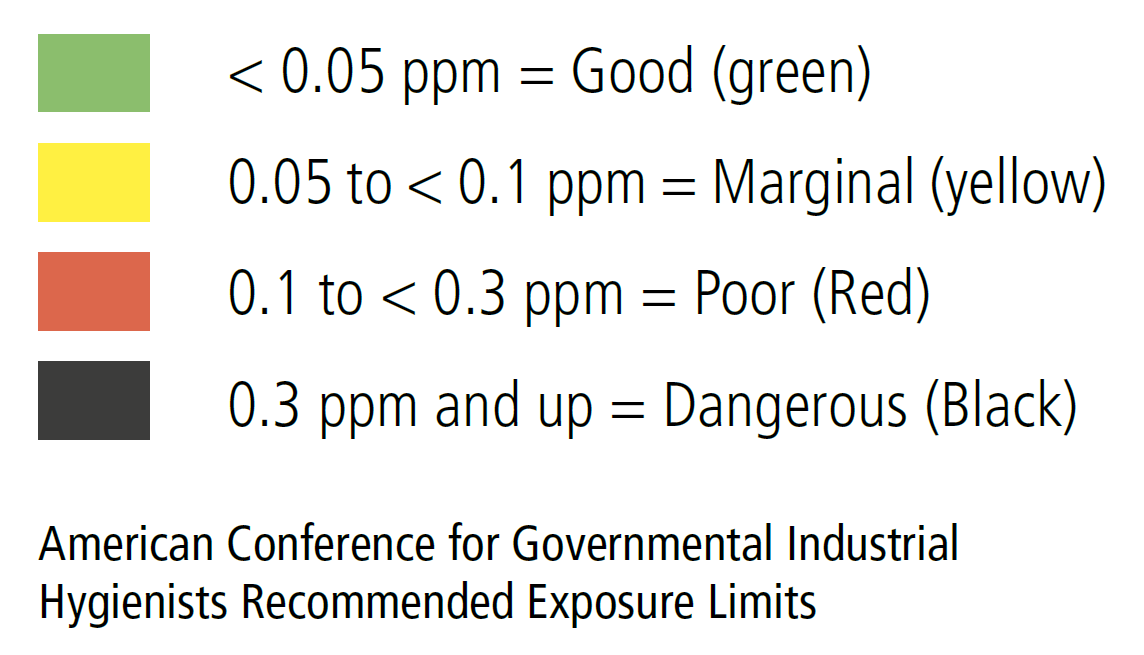The dangers of VOCS: Formaldehyde (CH2O)
Formaldehyde Causes 115 Excess Cases of Cancer Per Million People Exposed Each Year - ARB.CA Staff
A key component of the VOC family and a major focus for indoor air quality, Formaldehyde has been linked to a number of health issues. The International Agency for Research on Cancer (IARC) has classified it as a carcinogen capable of causing negative health effects and odor at concentrations as low as 0.1 ppm. The Health and Safety Administration (OSHA) has established an exposure limit to formaldehyde of 0.75 ppm for a maximum of 8 hours. Because Formaldehyde is utilised in numerous manufacturing processes for building materials and household products, it is typical for indoor air to possess a substantially higher concentration than outdoor air.

Identifying exactly which materials are the primary sources of formaldehyde without specialised indoor airquality monitoring equipment is difficult due to varying rates of release in different environments. For example, in homes with large amounts of new pressed wood products or paints, levels can consistently be greater than 0.3 ppm.
Common Sources of Formaldehyde
Newer buildings are at a much greater risk of containing high concentrations of formaldehyde. Any types of textiles like carpets, pressed wood such as wood flooring and particleboard, as well as paints and adhesives like wallpaper, latex paint, and cleaning agents can take a few hours to a number of months to release the majority of excess formaldehyde retained from the manufacturing process. Certain materials only release formaldehyde in various temperature and humidity conditions making it difficult to detect the primary source of contamination. The table above shows recommended limits of formaldehyde exposure.

Monitoring Solution: Si-AQ Expert Air Quality Monitor
A key component of the VOC family and a major focus for indoor air quality, Formaldehyde has been linked to a number of health issues. The International Agency for Research on Cancer (IARC) has classified it as a carcinogen capable of causing negative health effects and odor at concentrations as low as 0.1 ppm. The Health and Safety Administration (OSHA) has established an exposure limit to formaldehyde of 0.75 ppm for a maximum of 8 hours.
